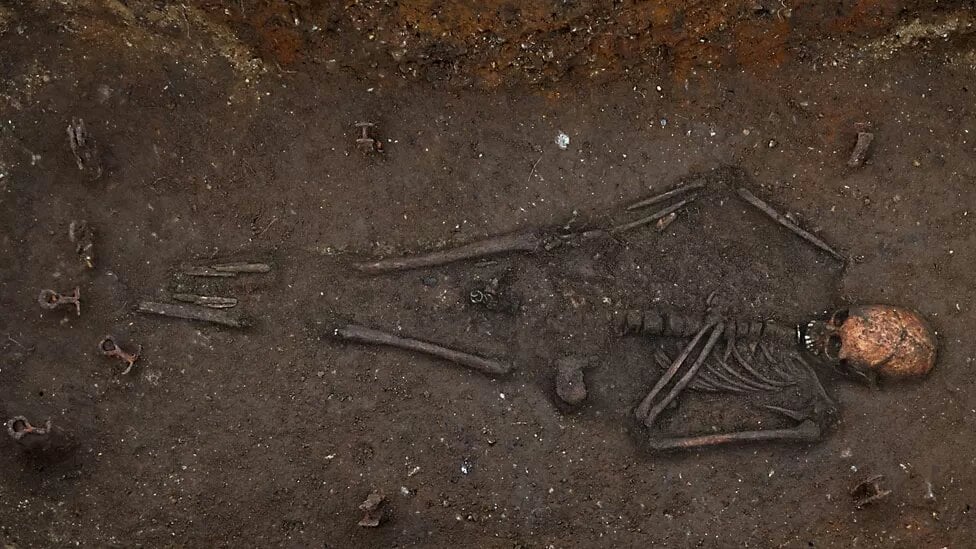
Archaeologists and forensic artists have successfully reconstructed the face of a young girl who passed away over 1,300 years ago.
The remains of this girl were discovered in 2012, laid to rest on a wooden bed in Trumpington, Cambridgeshire. Moreover, a cross made of gold and garnet rested upon her chest.
In an upcoming exhibition at Cambridge University, this facial reconstruction will be unveiled to the public.
Expressing his excitement, Dr. Sam Leggett, an archaeologist involved in the project, revealed that it is not uncommon for him to encounter individuals from the past without a face. Therefore, he found it truly heartwarming to witness the transformation.
'2011, the skeleton of the 16-year-old girl was exhumed near Cambridge….buried in a carved wooden bed, and laid to rest with fine clothing & an ornate gold cross…analysis…suggests she may have travelled from… Germany as a political bride to convert the pagan Anglo-Saxons' pic.twitter.com/JjrhH32iea
— Justin Hill – Author (@JHillAuthor) June 20, 2023
Use of ’tissue depth data’ to reconstruct the face
Utilizing scientific techniques, forensic artist Hew Morrison meticulously crafted the facial likeness of this young woman. He relied on the precise measurements of her skull and tissue depth data specific to Caucasian females.
Morrison noted an interesting detail during the reconstruction process: the girl’s left eye sat slightly lower than her right eye, creating a noticeable asymmetry in her appearance during her lifetime.
Recent in-depth analysis of the bones and teeth belonging to this 7th-century teenager has shed light on various aspects of her brief existence.
It was discovered that she was originally born near the Alps, likely in southern Germany, and later migrated to the flat and marshy terrain of Cambridgeshire’s fens after she reached the age of seven, as reported by BBC.
Changes in girl’s diet

Furthermore, when the young woman migrated to England, there was a noticeable shift in her dietary patterns.
The analysis has revealed a decrease in the proportion of protein consumed by the girl after her arrival in Trumpington, according to Dr. Leggett.
This means that she had a higher intake of meat and dairy products during her time in southern Germany compared to her new life in England.
Moreover, research conducted by Cambridge University and published last year brought to light an intriguing fact: before the Vikings settled, Anglo-Saxon kings followed mostly a vegetarian diet.
Previous analysis by researchers had already unveiled the fact that the young woman had been afflicted by an undisclosed illness prior to her passing.
Dr. Leggett said that it was already evident that she had been suffering from a health condition. The specific nature of the illness, however, remains unidentified.
The burial discovered is a rare find, as it is one of only 18 bed burials discovered in the United Kingdom. The presence of a gold and garnet cross not only shows her relation to Christianity but also suggests a possible aristocratic or royal lineage.
See all the latest news from Greece and the world at Greekreporter.com. Contact our newsroom to report an update or send your story, photos and videos. Follow GR on Google News and subscribe here to our daily email!



